Theory
Meteorological quantities
Meteorological observations consist of measuring air temperature, humidity, atmospheric pressure, length of sunshine, precipitation, snow cover, wind speed and direction, visibility, monitoring of clouds, thunderstorms or other phenomena that may vary according to the specialization of the station. A number of instruments are used to measure these phenomena and elements. Nowadays, when the world is ruled by computer technology, many quantities have ceased to be read by the human eye and written in diaries, as was the case in the past. These quantities are measured automatically and are also sent automatically.
The oldest Czech meteorological observatory is located in Prague Klementinum, and the station began regular measurements as early as 1752. Of course, there were other measurements before, but they were not complete or their existence is not fully documented. Even in Klementinum, they did not always have complete data; the year 1775 is considered to be the beginning of the Clementine series of continuous measurements.
Temperature measurement
Temperature is a physical quantity that is measurable due to the fact that almost all bodies change their certain physical properties when heated – for example, they expand during heating or change their electrical resistance. The temperature can therefore be determined according to a change in the volume or length of a given body, or a change in an electrical quantity. So we actually measure the temperature by measuring other quantities. The temperature is measured using thermometers and its unit in our regions is Celsius. In the USA, Canada, Great Britain, the Fahrenheit temperature scale with a unit of °F is used in meteorology. It has a conversion relationship to the Celsius scale: 0 °C = 32 °F, 100 °C = 212 °F.
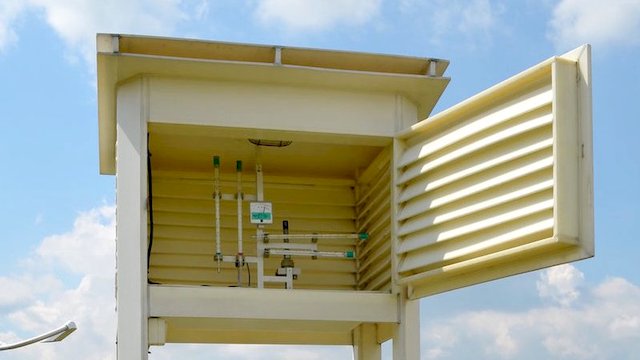
Fig. 1 – Meteorological booth – basic equipment of each weather station.
The air temperature is measured correctly in the shade. At professional meteorological stations, it is measured in louvered booths, which are built at a height of 2 m above the ground. The air in them flows freely, so it is constantly exchanged with the surrounding air. The booth is white to reflect the sun's rays. It is usually wooden because wood is a bad conductor of heat. The door faces north so that the thermometers cannot be irradiated by the sun even when the booth is opened.
In addition to measuring the temperature at a standard height of 2 m above the ground, it is important to know the temperature at ground or 5 cm above the ground. At some meteorological stations, the temperature is measured even at higher altitudes using radio probes up to a height of 20 km. An interesting figure is the soil temperature below the earth's surface to depths of about 1 m to 2 m. At depths greater than 2 m, temperature changes are negligible (several tenths of °C per year). At a depth of 10 m, the temperature does not change during the year.
Measurement of barometric air pressure
Atmospheric air pressure is the pressure caused by the atmospheric pressure force (the weight of the column of air above our heads). We measure only barometers and it is usually given in hectopascals (hPa). Atmospheric pressure is related to both the current state of the atmosphere (current weather) and the altitude at which it decreases. The average atmospheric pressure at sea level (ie at an altitude of 0 m) is set at 1013.25 hPa. The graph of the dependence of atmospheric pressure on increasing altitude is shown in Figure 2. As can be seen, this change is not linear. It also depends on many often variable factors, such as the specific gravity of the air, the gravitational acceleration at a given location, the significant air flow or the temperature of the air column, including its gradient. Nevertheless, at lower altitudes, a simplified relationship can be used, which says that a height difference of 10 meters corresponds to a pressure change of about 1.2 hPa – so a pressure change of 1 hPa corresponds to a height change of about 8.43 meters (valid to altitudes of about up to 1 km). At an altitude of 5.5 km above sea level, the pressure is about half, ie about 500 hPa. The pressure drop with increasing altitude is used, for example, to determine the altitude in tourist altimeters, smart watches, etc.
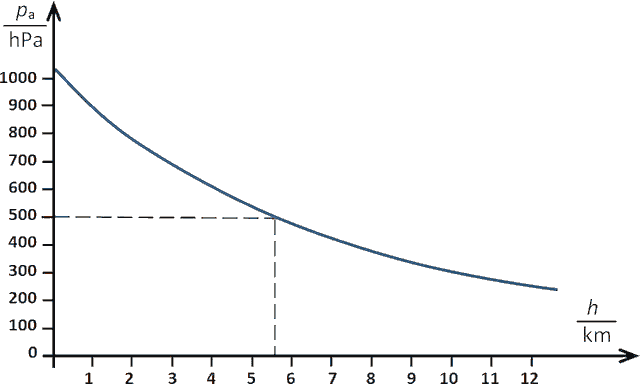
Fig. 2 – Dependence of barometric air pressure on altitude.
There are several formulas for converting local absolute atmospheric pressure to sea level pressure, in various shapes and modifications. Some really take into account the geographical coordinates with gravitational acceleration in a given place on the globe. The following three expressions are a compromise between the achievable accuracy and simplicity of the expression.
The first formula does not take into account the current temperature:
The second formula is derived from the barometric equation by the Frenchman J. Babinet:
The last formula, ie expression (1) can be considered accurate and is reportedly used for calculations of the ICAO (International Civil Aviation Organization):
In all three samples, p0 is the required pressure at sea level, p is the absolute pressure obtained by measurement, t is the temperature in degrees Celsius and h is the altitude in meters.
Measurement of atmospheric air pressure

Fig. 3 – Principle of mercury barometer
One of the devices for measuring atmospheric pressure is a mercury barometer. It consists of a tube at one end sealed, filled with mercury, which is subjected to atmospheric pressure at the other curved end. According to the height of the mercury below the sealed end, the magnitude of the atmospheric pressure can be determined (the higher the mercury rises, the higher the pressure). The mercury barometer was invented by Evangelista Torricelli (1608–1647) in 1643.
Another device of instruments for measuring atmospheric pressure is the so-called aneroid. Its main part is a box from which air is exhausted. The elastic corrugated wall of the box is exerted by the compressive force of atmospheric air (the compressive force of the compressed spring acts against it). Changes in atmospheric pressure cause elastic deformation of the elastic wall, which is transmitted to the handle. The position of the handle on the scale determines the atmospheric pressure. The aneroid was invented in 1843 by Lucien Vidie. The original name of the barometer anéroide means "pressure gauge without liquid".
Atmospheric pressure is measured continuously at meteorological stations. The barograph is used to automatically record its values. Its principle is similar to that of an aneroid, only it uses several corrugated metal boxes on top of each other to achieve greater deflection and thus a more sensitive displacement of the handle during pressure changes. A graphical record of the state of atmospheric pressure is captured on paper wound on a roller, which rotates evenly around the axis once a week. The name barograph is related to the name of the unit bar (b), or the unit millibar. Of the units used today, this unit corresponds to hectopascal (1 mb = 1 hPa = 100 Pa).
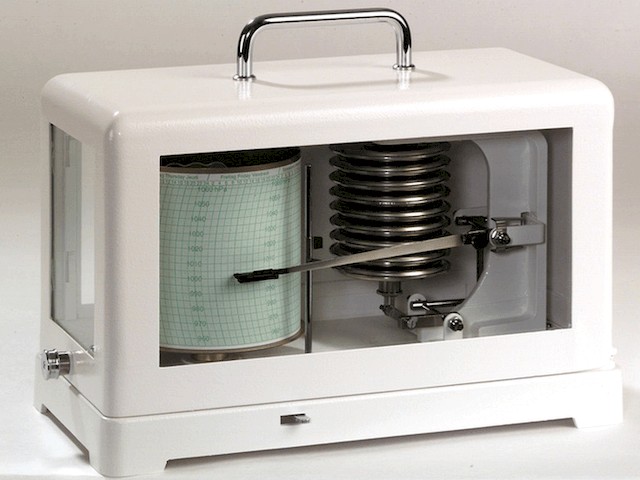
Fig. 4 – A barograph is a registration barometer for recording the time course of atmospheric pressure.
Weather forecast from atmospheric pressure
Air pressure, like temperature, has its daily course. In the morning, the air pressure usually rises slightly, in the afternoon it drops slightly and in the evening it rises again and drops again after midnight.
- When the air pressure is lower than 1000 hPa, we expect rainy weather. It is true that the lower the pressure, the more stable the rainy weather. But beware! If the east wind blows at low air pressure, it may not rain. (valid for our region)
- If the air pressure is in the range of 1000–1020 hPa, we expect variable weather.
- Finally, once the air pressure is higher than 1020 hPa, we can usually expect sunny weather without precipitation. And the higher the pressure, the higher the chance of nice weather. But beware! Even at high pressure, it can rain, for example in a humid westerly wind. (valid for our region)
When the air pressure suddenly drops sharply, there is a chance of thunderstorms and stronger winds. If the air pressure fluctuates quickly, it means variable weather. When the air pressure drops throughout the day, but the humidity increases, there is a good chance of a storm.
The results of the pressure measurements are converted to zero altitude and recorded in meteorological maps. Meteorologists use a curve to connect places where the same atmospheric pressure is at the same time. These curves are called isobars. If we look at the weather map with the isobars drawn, we can see the location of areas where the air pressure is lower or higher than in their surroundings. These areas are called pressure lower (or cyclones) and pressure higher (or anticyclones). These areas are bounded by one or more closed isobars. In the pressure lower, the pressure in the enclosed space is lower than in the last closed isobar. In the anticyclone, the opposite is true.
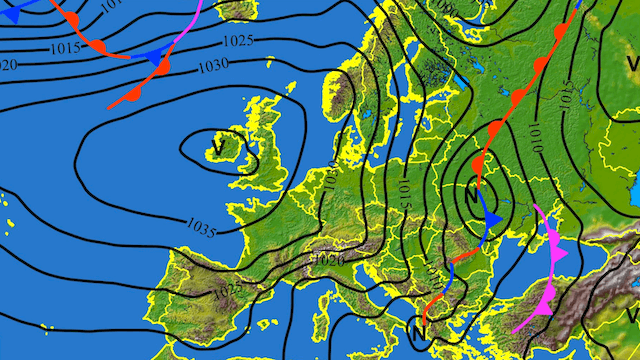
Fig. 5 – Synoptic map with drawn isobars.
Humidity measurement
Water occurs in all three states in the atmosphere – ie gaseous, liquid and solid. Humidity is a meteorological element describing the amount of water vapor in the air that is created by the evaporation of water from water bodies such as rivers, ponds, lakes, the sea, but also from the soil and the surface of plants and animals.
Absolute air humidity
The absolute air humidity of the air is determined by the weight of water vapor contained in the air with a volume of 1 m3. The formula resembles the relationship for density, but beware, in the numerator is the mass of water, in the denominator is the volume of air! With regard to the values achieved, the absolute humidity is usually given in grams per cubic meter.
If the air is saturated with water vapor at a given temperature, it has the highest possible humidity. It cannot receive more water vapor. When the air, which is saturated with water vapor, cools, part of the water vapor liquefies. Conversely, if the temperature of the air, which is saturated with water vapor, increases, it may absorb more water vapor. Humidity is therefore also affected by its temperature.
Relative air humidity
Relative humidity is used for practical assessment of humidity. We calculate it, if we divide the absolute humidity Φ greatest possible absolute humidity Φm at a given temperature.
Relative humidity is given as a percentage. Perfectly dry air would have a relative humidity of 0 %, on the contrary, if the air is completely saturated with water vapor, it will have a relative humidity of 100 %.
Evaporation of water from the skin of our body is an important factor in regulating the temperature of the human body. The greater the relative humidity of the air around us, the worse and slower the water evaporates from the surface of our body and vice versa. The humidity of the air around a person is therefore of great importance for his sense of well-being and health. The most favorable relative humidity in a closed room at a temperature of about 20 °C is 50 %–70 %.
Relative humidity is measured by hygrometers or hygrographs. So-called hair-hygrometer are relatively common for measuring relative humidity. In this type of hygrometer, a bundle of human hair (natural blond, without chemical treatment, cleaned and degreased) is used as a measuring element. The ends of the hair bundle are caught in the beam holders, the bundle itself is then divided into several strands to allow moisture to act. The hair bundle is connected by a fine lever mechanism to a handle that shows the relative humidity on the scale. As the humidity increases, the hair bundle lengthens and vice versa. The change in hair length is for the moisture range 0 % to 100 % about 2.5 % of their length.
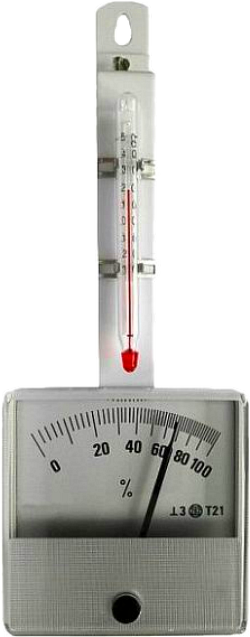
Fig. 6 – Hair-hygrometer.
Dew point
Dew point (dew point temperature) is the temperature at which the air is maximally saturated with water vapor (relative humidity reaches 100 %). If the temperature drops below this point, condensation occurs. The dew point temperature is different for different absolute humidity. The more water vapor there is in the air, the higher the dew point temperature, so the higher the temperature the air (and steam) must be to keep the steam from condensing. Conversely, if there is very little water vapor in the air, the air may be colder without the vapor condensing.
The dew point can be calculated according to the following formula, in which the input values are temperature t (set in °C ) and relative humidity φ (in %). The formula contains empirically determined constants (under normal conditions the accuracy of the result is up to 1 %).
It is also possible to use the following formula for the basic estimate, but it is very inaccurate:
Relative humidity is measured by hygrometers or hygrographs. So-called hair-hygrometer are relatively common for measuring relative humidity. In this type of hygrometer, a bundle of human hair (natural blond, without chemical treatment, cleaned and degreased) is used as a measuring element. The ends of the hair bundle are caught in the beam holders, the bundle itself is then divided into several strands to allow moisture to act. The hair bundle is connected by a fine lever mechanism to a handle that shows the relative humidity on the scale. As the humidity increases, the hair bundle lengthens and vice versa. The change in hair length is for the moisture range 0 % to 100 % about 2.5 % of their length.











